- Check out my propagation tray!
- Why I No Longer Buy Non-Refrigerated Almondmilk
- These Cardboard Cartons Are Not Just Cardboard
- Meet Tetra Pak, the most maddening piece of packaging in your kitchen by Chris Taylor, Mashable
- What is Multilayer Packaging? - everydayrecycler.com
- Environmental Sustainability of Fluid Milk Delivery Systems in the United States - Burek et al. (2017)
- I'm Not Saying Don't Recycle This Stuff
- Automated and real-time nutrient measurement
Check out my propagation tray!
These are several different varieties of sweet potato!
Stay tuned for the rihizomes. On the main page photo the long shoots are ginger, which is a rhizome.
The drainage system is aluminum foil atop a 3 mil (0.07 mm) plastic (polyethylene) sheet feeding into a bucket. To maintain the drain's shape I used bendy gardening wire. The aluminum foil layer consists of 3 long sheets taped together using 3M "Transpore" surgical tape. (I figure, if it's safe for patients, then it is safe for sweet potatoes. There are other types of tapes that I deliberately avoided; e.g. duct tape, because I believe its adhesive is acidic and might eat through the aluminum foil.)
Whole setup
(Note - I do not actually live on Mars.)
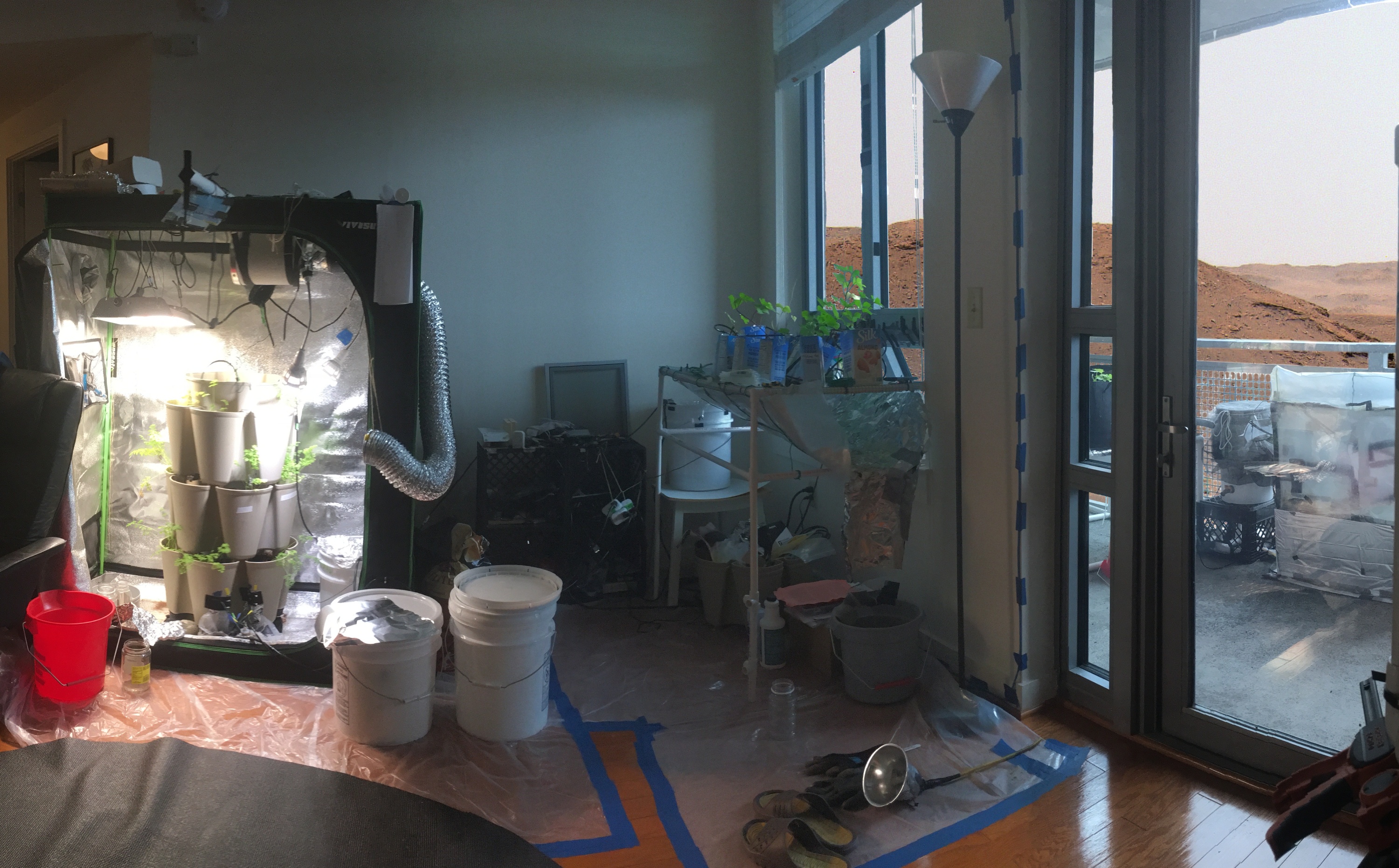
How to make the planters
(These steps are a little outdated because as you can see above, I am now transitioning to using larger individual planters.) These containers are difficult to recycle (different municipalities have different capabilities, so it definitely can be done, but it always takes a lot of effort). But in my case, at least some of these cartons can easily be reused. For root crops you need planters that are deep I would think, hence this choice.
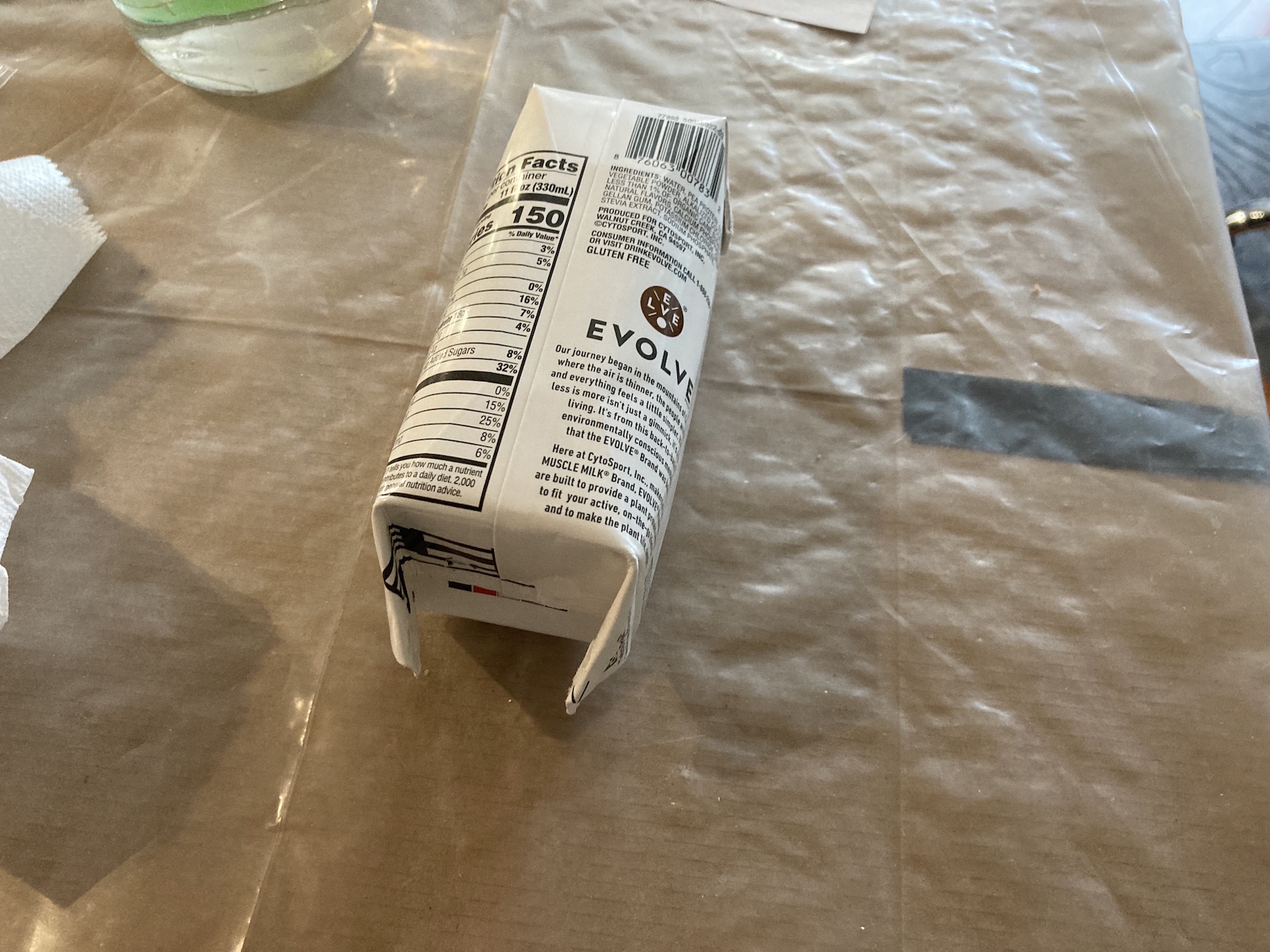
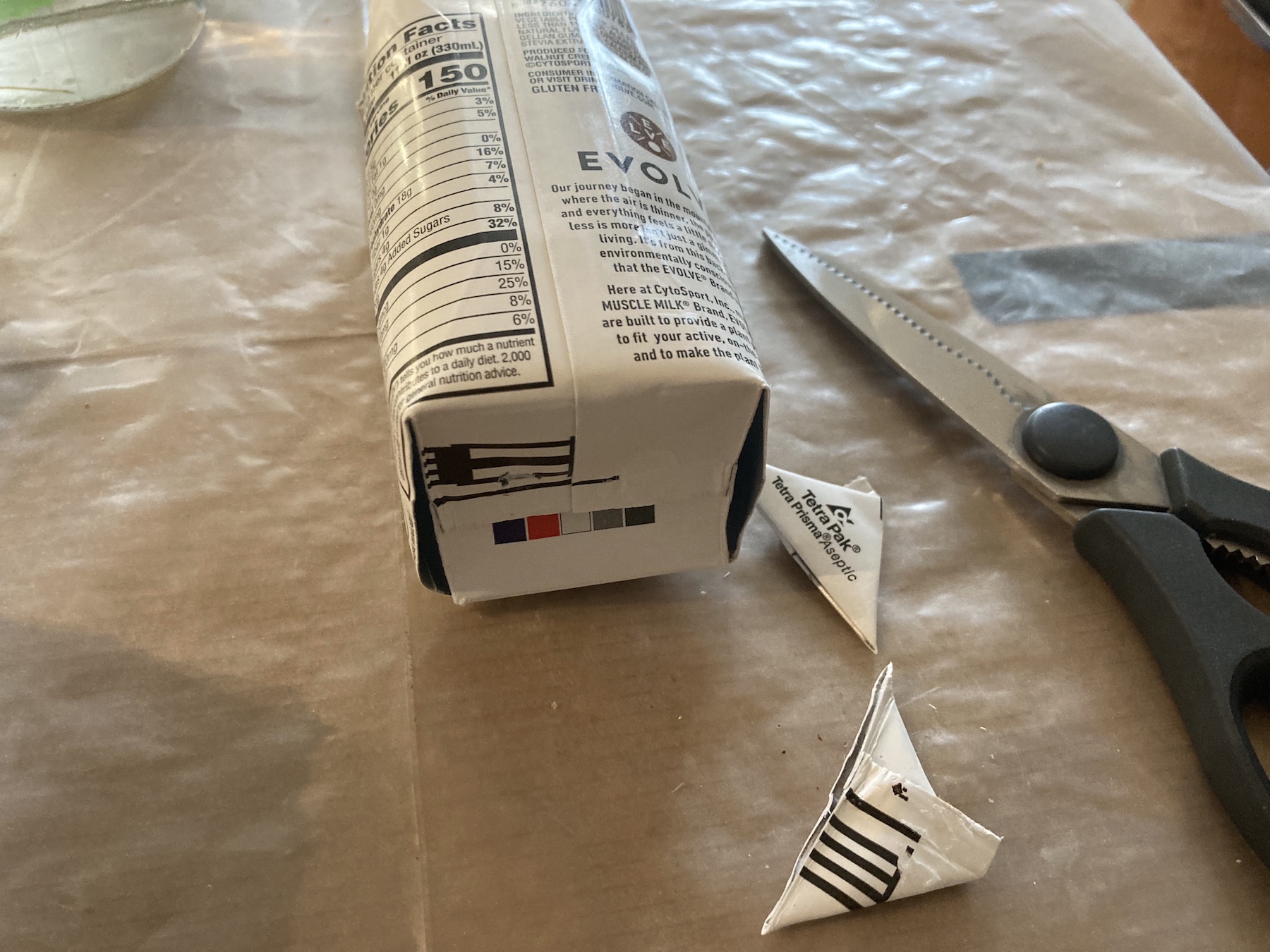
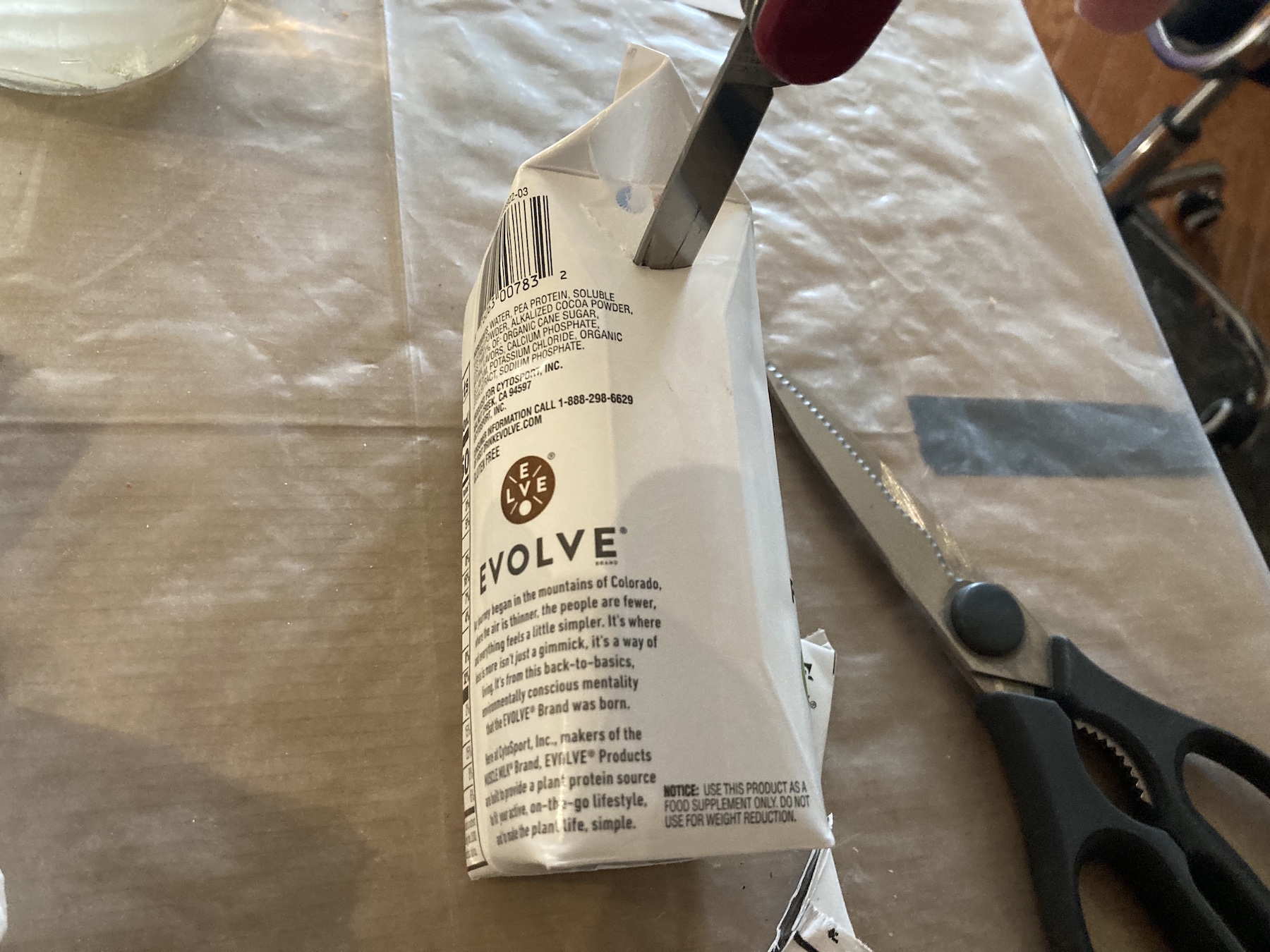
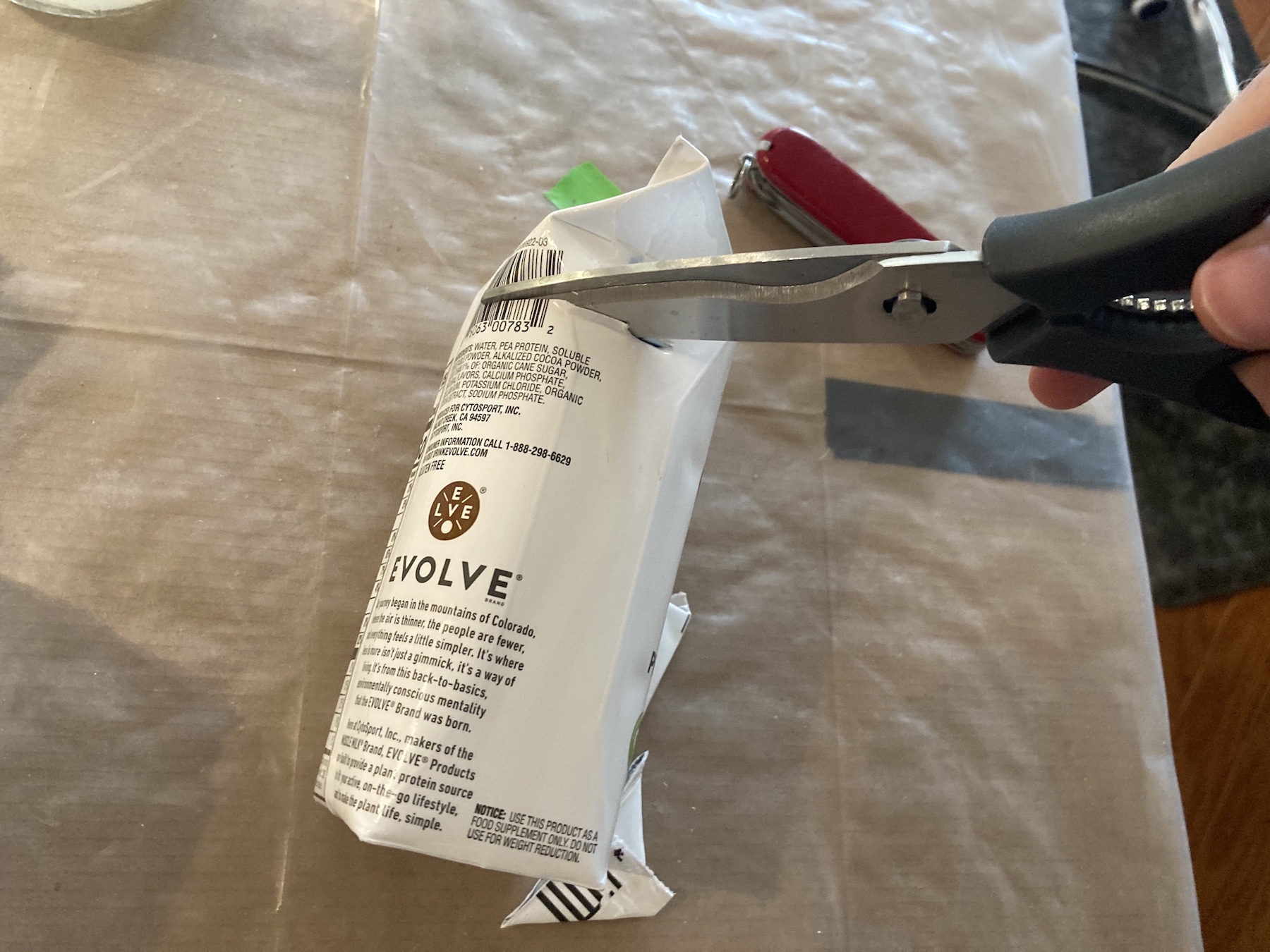
Usually I wash the containers thoroughly before cutting holes in them. E.g. soak overnight in soapy water, then 2-3 multi-hour soaks in regular water.
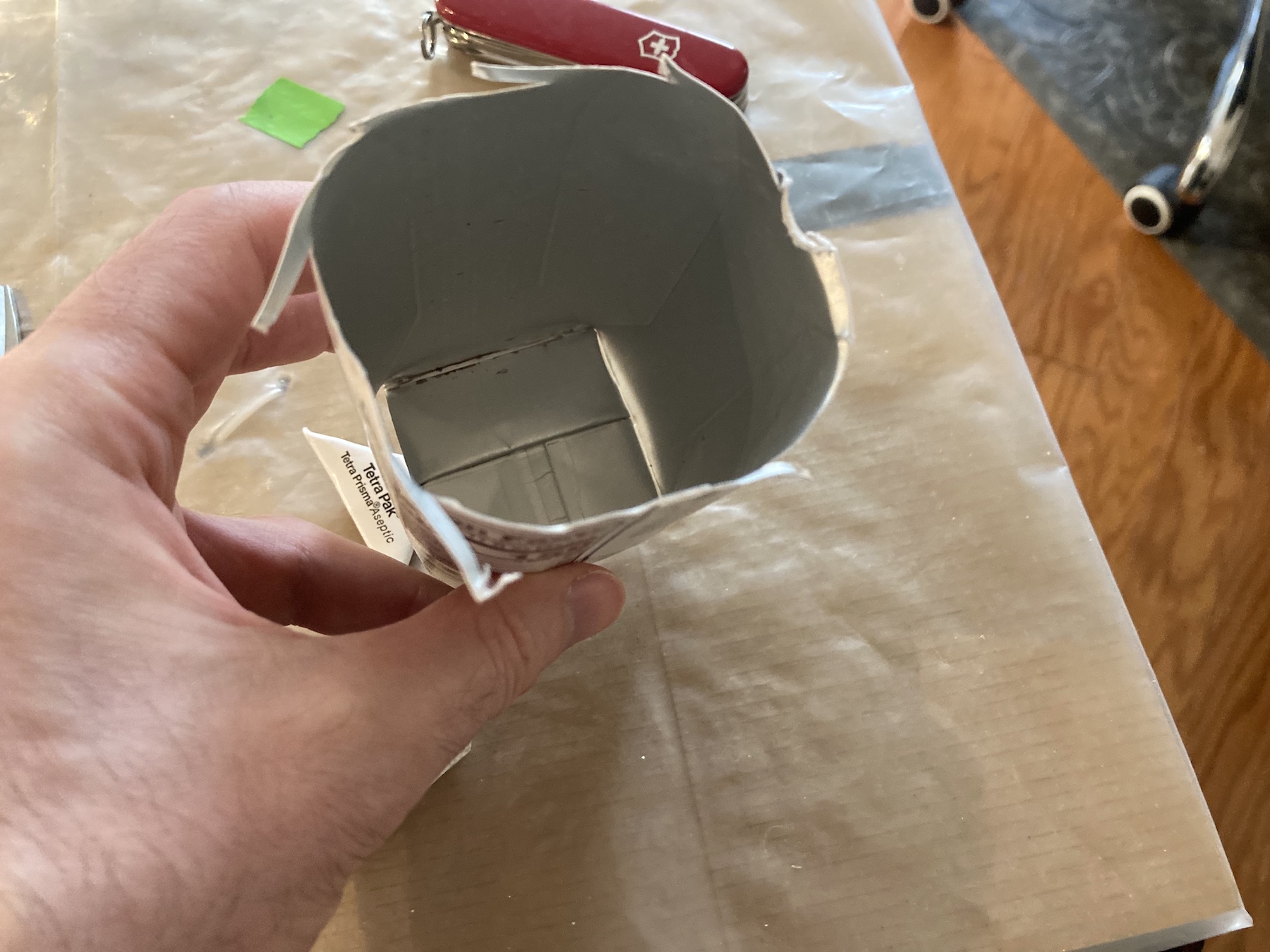
I'm using the TetraPak "Tetra Prisma" (small planters) and the TetraPak "Tetra Brik" (large planters). Update 8/15/2021 - moving to only using the larger Tetra Brik. For 2 reasons: (1) as the months passed I realized I might need a way to remove the plants from their containers, which forced me to completely redesign the tray. The initial foam version was unable to keep all of the planters from sinking into the drain layer, so I used duct tape to secure them, and that made everything awkward. (2) I noticed that the one plant I tried in the Brik container had much more vigorous foliage. Partly because the Beuregard variety is just a more robust grower, but I think the container shape contributed.
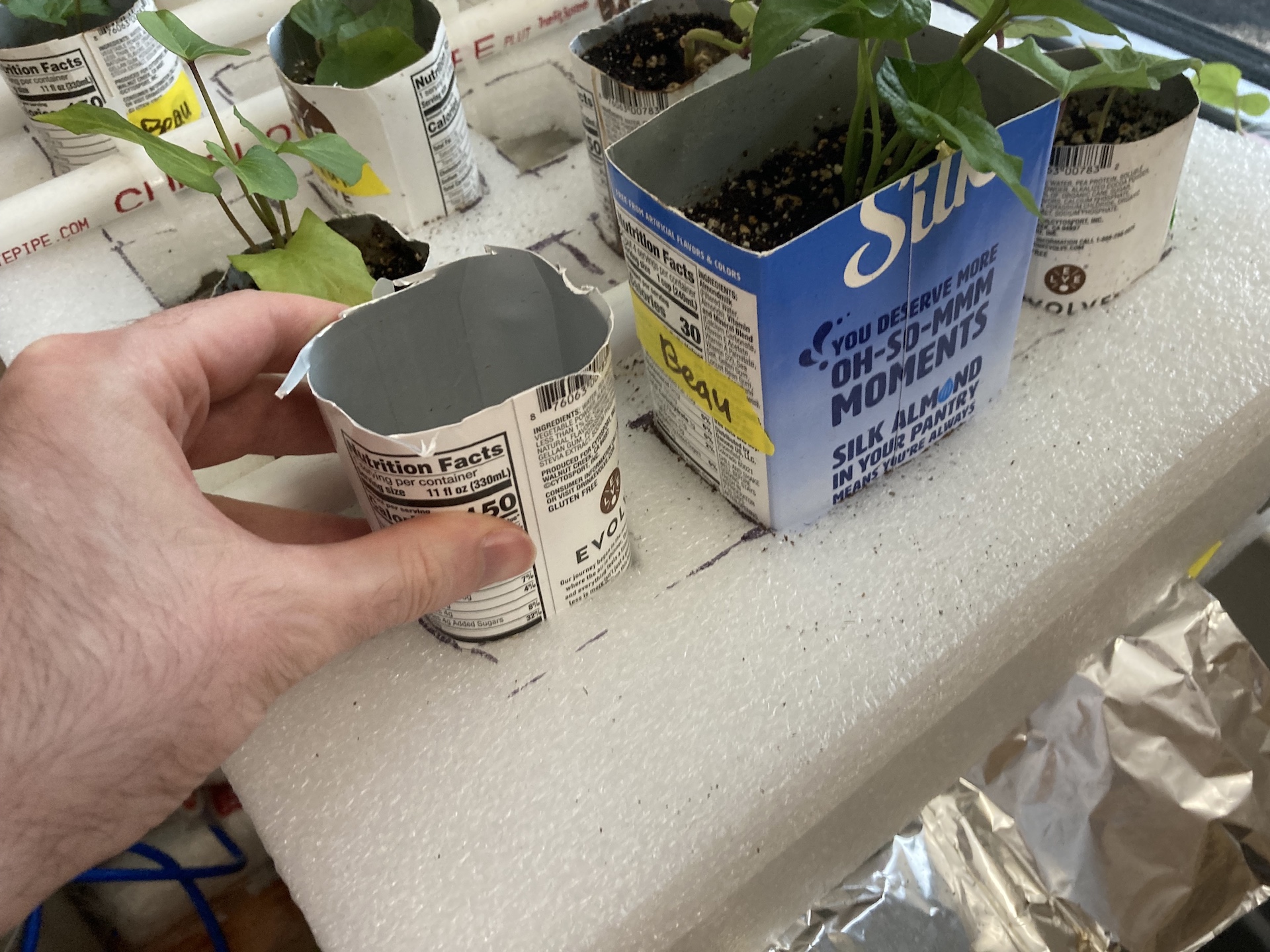
Why I No Longer Buy Non-Refrigerated Almondmilk
As we will see, the packaging used by TetraPak is probably harder to recycle than that used by "evergreen packaging" - which itself may be problematic too.
This is difficult. For one thing almonds are resource intensive to grow. For another, refrigerators also require a lot of resources to grow (but I hear that you can get way better yield using hydroponics. For the refrigerators, not the almonds.)
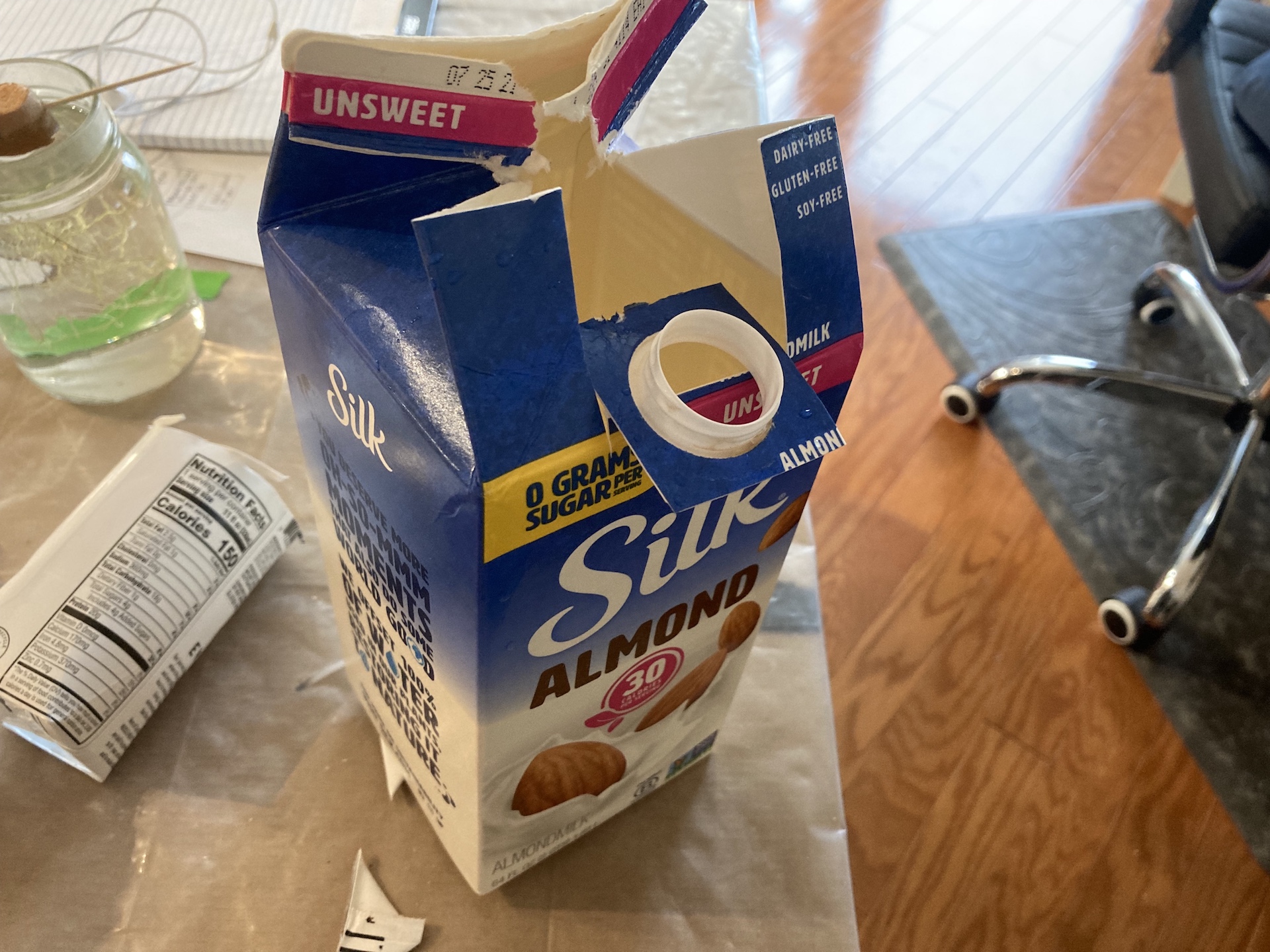
These Cardboard Cartons Are Not Just Cardboard
Left to right: Tetra Prisma, Tetra Brik, evergreen packaging
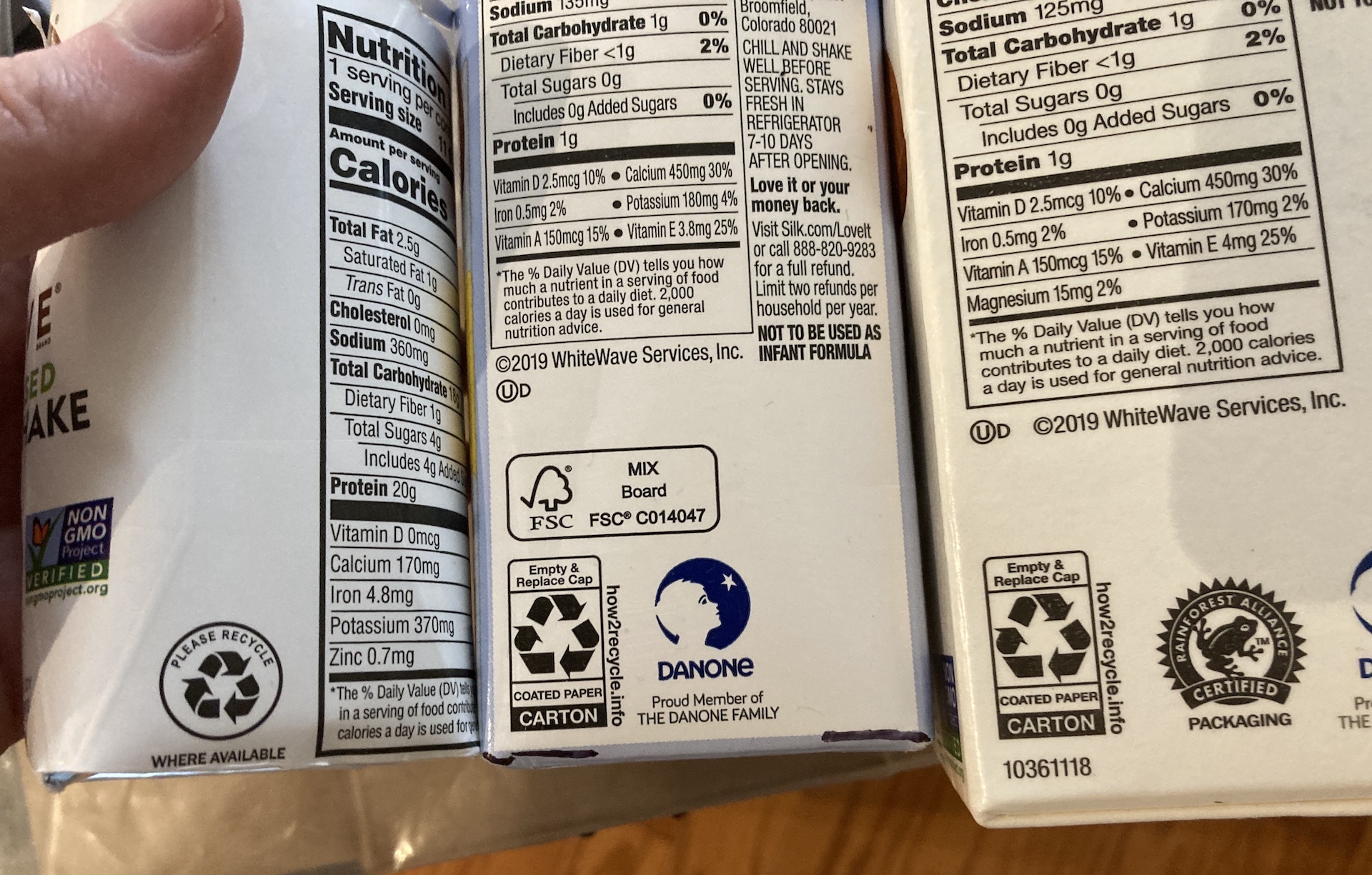
Tetra Prisma Deconstruction
I soaked it in water for 30 mins to make it easier to pull apart.
Tetra Brik
Same deal as Tetra Prisma: plastic | cardboard | aluminum foil | plastic
evergreen
Not as bad: cardboard | plastic
Meet Tetra Pak, the most maddening piece of packaging in your kitchen by Chris Taylor, Mashable
What is Multilayer Packaging? - everydayrecycler.com
Environmental Sustainability of Fluid Milk Delivery Systems in the United States - Burek et al. (2017)
"We present a broad discussion on environmental sustainability of 18 fluid milk containers through life cycle assessment... alternative FMDSs may improve environmental sustainability of the U.S. postfarm fluid milk supply chain."
I'm Not Saying Don't Recycle This Stuff
- I'm just saying it needs more R&D.
Paying for the Green New Dealhttps://t.co/KngtcxJLPk
— Paying for the Green New Deal (@payforgnd) November 27, 2019
List of video threads, by speaker:
Thread 1. Simon Metcalf; Andrés Bernal; Stephanie Keltonhttps://t.co/D0xWtywqOR
Thread 2. Fadhel Kaboubhttps://t.co/8r6gnxTISH
Relevant artwork:https://t.co/O7eqNKfNYx
Automated and real-time nutrient measurement
I'm interested in automated nutrient monitoring, because I think it would be necessary to get the most out of hydroponic systems. It's also true that I just don't know much about farming, so some things related to soil nutrients that one would learn from experience are knowledge I simply lack. Even so, the "soil" that I work with in my grow tent is coconut coir pith and perlite, which starts out essentially sterile, i.e., zero nutrients. I do this because I don't want bugs in my apartment. In future projects I may build a fogponic system, in which nutrient monitoring would be even more critical, because there is even less intermediation between the chemicals and the roots.
Real-time and/or automated nutrient monitoring is not common, however, I've found some promising research:
(2017) Detection of Nitrogen, Phosphorus, and Potassium (NPK) nutrients of soil using Optical Transducer
(2018) Vision System for Soil Nutrient Detection Using Fuzzy Logic
(2021) Determination of soil nutrients (NPK) using optical methods: a mini review